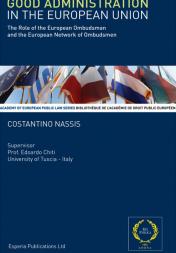
International Human Rights Protection and Renewables –
A Rapidly Evolving Landscape
Doctor of Law, Professor, Academic of the National Academy of Law Sciences of Ukraine
LLM, Ph.D., ILO Research Scholarship
The ongoing transition away from carbon-based sources of energy toward a greater use of renewables depends largely on the acceptance of large scale deployment of wind and solar farms by rural communities. Protection of human rights throughout the whole chain of the buildup of the renewables infrastructure – from land allocation to sourcing of the raw materials – is essential for achieving the EU climate goals and beyond may determine the ultimate success of the transition since a growing local resistance stalled their growth in a number of countries already. A recent reversal of the renewables-assisting legal landscape in the Province of Ontario, the industrial heartland of Canada, which, at least in part, is caused by limitation of the municipalities’ right to approve the large scale renewables projects, offers a valuable lesson for the EU and the world at large. The UN “Guiding Principles on Business and Human Rights: Implementing the United Nations ‘Protect, Respect and Remedy’ Framework” is a positive development which may lead to the future enhancement of the existing international law treaties while a set of more specific renewables-oriented norms may be required to achieve an optimal balance between the climate goals and protection of human rights of the communities where these sources of energy may be deployed.
La transition actuelle des sources d’énergie à base de carbone vers une plus grande utilisation des énergies renouvelables dépend largement de l’acceptation par les communautés rurales du déploiement à grande échelle de parcs éoliens et solaires. La protection des droits de l’homme tout au long de la chaîne de construction des infrastructures d’énergies renouvelables – de l’affectation des terres à l’approvisionnement en matières premières – est essentielle pour atteindre les objectifs climatiques de l’UE et, au-delà, peut décider du succès final de la transition, car une résistance locale croissante a déjà freiné leur expansion dans un certain nombre de pays. Le récent revirement du paysage juridique en matière d’aide aux énergies renouvelables dans la province de l’Ontario, le cœur industriel du Canada, dû, en partie au moins, à la limitation du droit des municipalités d’approuver les projets d’énergies renouvelables à grande échelle, constitue une leçon précieuse pour l’UE et le monde entier. Les Nations unies ont adopté les “Principes directeurs relatifs aux entreprises et aux droits de l’homme: Mise en œuvre du cadre de référence ‘protéger, respecter et réparer’”, évolution positive qui pourrait conduire à l’amélioration future des traités de droit international existants; mais un ensemble de normes plus spécifiques axées sur les énergies renouvelables pourrait s’avérer nécessaire pour atteindre un équilibre optimal entre les objectifs climatiques et la protection des droits de l’homme des communautés où ces sources d’énergie peuvent être déployées.





















